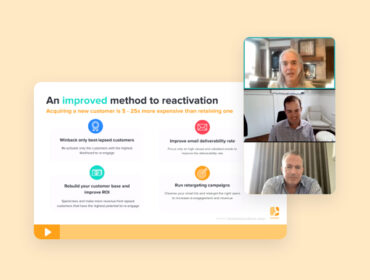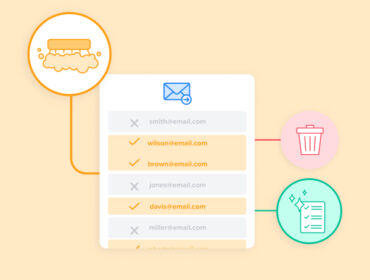Real Time Banter: How to Improve Audience Resolution and Addressability
In this Real Time Banter webinar, LiveIntent SVP of global marketing, Kerel Cooper, and VP of marketing, Nick Dujnic, speak with Garrett McGrath, VP of product management at Magnite, and Jessica Muñoz, VP of product marketing at LiveIntent, about improving audience resolution and addressability.
Key insights from Garrett McGrath and Jessica Muñoz
Rubicon Project and Telaria recently merged to form Magnite, the largest independent sell-side advertising platform. As VP of product management at Magnite, McGrath is spending a lot of time helping publishers transition away from using third-party cookies.
“There’s a spectrum, from people ignoring it to people panicking, and then there’s people kind of in the middle,” he said. “Almost all of these conversations start with realizing these systems need to move to the end-user control or the publisher control. They need to be transparent, controllable, opt-outable, and consent-able regarding identity, which we haven’t done a terrific job of to date.”
Third-party cookies have enabled four different functions: targeting, attribution, frequency caps, and opt-outs.
“So how do you manage an opt-out if there’s no third-party cookie?” McGrath asked. “I don’t think anybody has an answer for that. But I think that targeting and audience identification are probably going to move from buy-side towards publishers and first-party signals.”
Still, many publishers have been hesitant to rework their monetization and data strategies.
“We’re hearing that publishers are very interested in what this new phase of the industry looks like, and they want to put their data to work,” Muñoz said. “But they don’t want to be first to adopt this new technology. They’re saying, ‘If we’re the first to migrate, does that mean we completely shift everything right now? Or is there a way we can straddle what currently exists and get our feet wet without doing the full transition?'”
To adapt, publishers have to navigate the business implications of using new technologies.
“The reality is we’re headed towards an anonymized internet by default,” McGrath said. “Some people will volunteer information in exchange for a better experience, and then there’s people talking about creating a cohort-driven digital economy where affinity groups are assembled and then being purchased against in privacy-safe or differential ways.”
One of the biggest struggles publishers and advertisers have is working with third-party intermediaries to sync their data and map it to ROI.
“You need a common shared ID like the email address to communicate value that’s exchanged both in the buying process and the conversion process,” Muñoz said. “I think if you’re able to partner with people who can help reveal that piece of the puzzle for you to revive that ROI, that gets you one step closer.”
That’s why LiveIntent and Magnite are partnering to help publishers and marketers solve their targeting problems and measure ROI for both parties.
“We’re doing it in a way that doesn’t make you yield the power of your data that you’ve spent so much time amassing.” McGrath said. “It helps you extend that first-party data into an ecosystem where you’ve had to rely on third-party data. The confidence that you have using your first-party data in walled gardens? You can now take that confidence to the open web. That’s what I’m most excited about with our partnership.”
- Find the right tools. “What are the tools being put in place today that help bridge the gap into the brave new world of no third-party cookies?” McGrath said. “There are a number of solutions out there for email-based identifiers and first-party identifiers.”
- Look at Safari and Firefox. “It’s very similar to what you’re going to see with Chrome very soon,” Muñoz said. “Now’s the time for you to iterate and test in those environments. Take a look at what isn’t working for you there and start testing with partners.”
- Clarify your value proposition. “If you can get your data in order to speak confidently to your partners and advertisers about what makes you special and what makes you a valuable place to advertise,” McGrath said, “that’s going to help you make sure you’re getting what you want out of that relationship.”
Sign up for more Real Time Banter and other industry insights with the LiveIntent newsletter.


